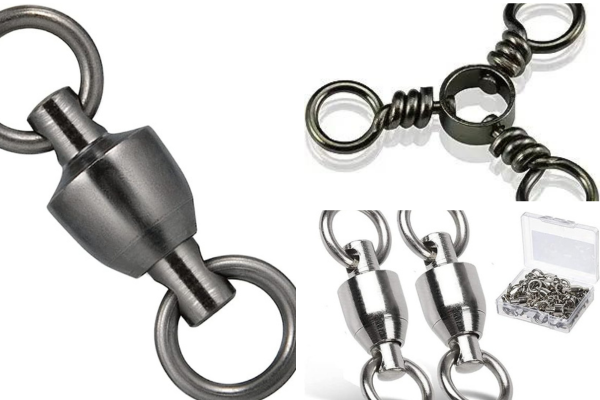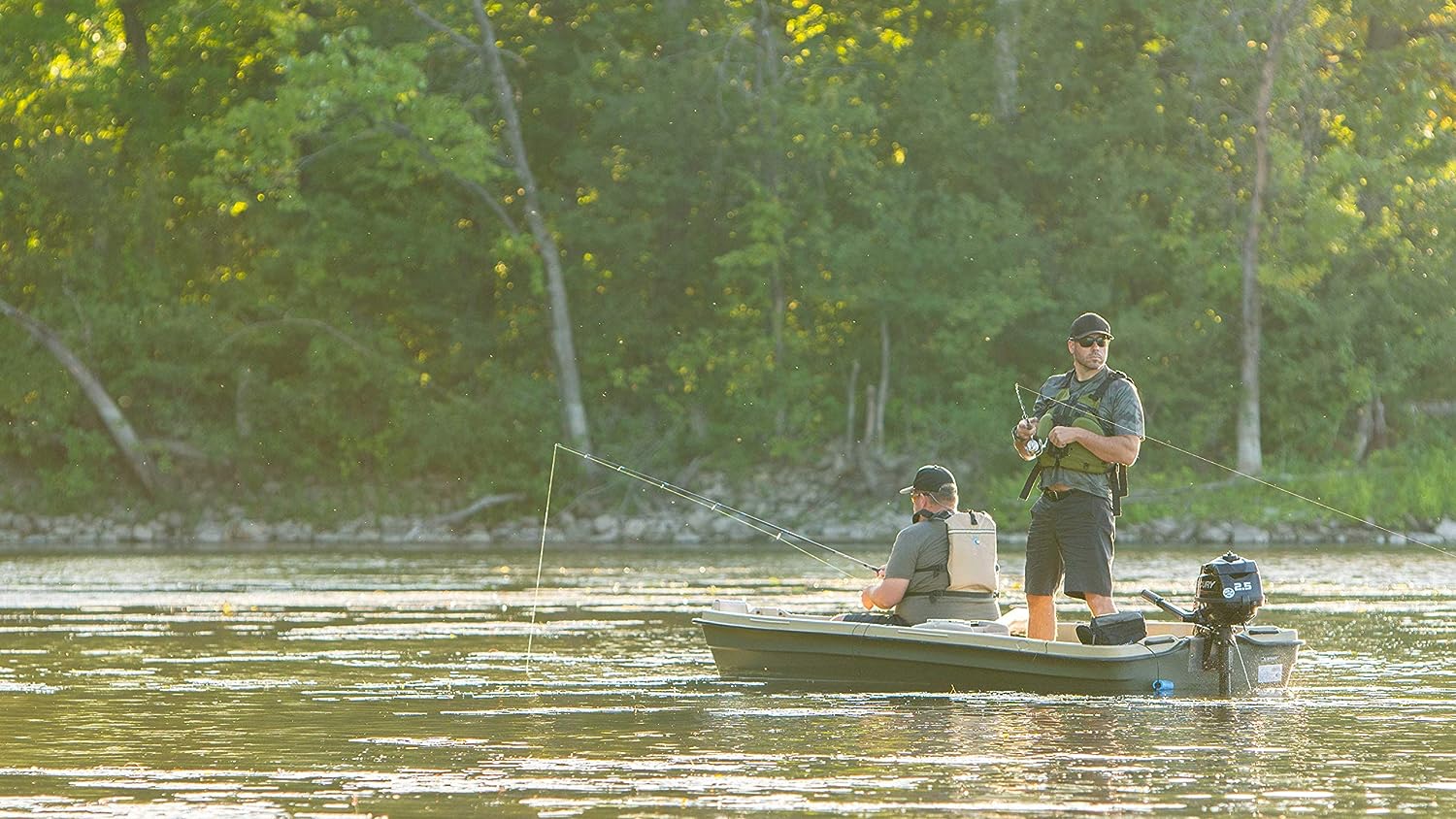Tying a shock leader to the mainline is an essential skill for an angler because shock leaders make it possible to cast rigs at long distances. If you are using a braid mainline, tying a shock leader can be a bit stressful. However, with the right instructions, you can do it. In this post, we will show you how to tie shock leader to braid.
Why Use a Shock Leader?
For fishing that involves any type of power casting, using a shock leader is of utmost importance. A shock leader makes it possible to cast your braid at a long distance.
The thinness of braided lines can be great when casting, but it can be a disadvantage when the braid comes in contact with a rock or reef. In such a situation, a shock leader can protect your braided line.
Having a shock leader is good also when you land a fish. It can be dangerous to grab a braided line with wet hands and flip a fish in the boat. The braid might slip through your fingers and cut your hand.
Shock leader is also good for head boat fishing that involves dealing with tangled lines. A shock leader makes it easy to untangle a braided line. It is important to use a shock leader when you are trying to catch a mackerel or bluefish. These fishes can easily bite through a monofilament leader.
Before you know how to tie shock leader to braid, it is important to know why you are using a shock leader in the first place. So far we have seen that a shock leader can be useful in many circumstances.
But if you are trying to catch non-toothy, small fish species, you do not need a shock leader.
Choosing the Right Braided Line
Polyethylene, the main ingredient of braided lines, is also used to manufacture slings, ropes, body armor, and cut-resistant gloves. To make fishing lines, the microfiber strands are twisted together.
The compactness of a braided line depends on how many fiber bundles it is composed of. Here are different types of braided lines and their uses:
Four-Strand braid
Four-strand braided lines are known for their abrasive resistance and strength. Thanks to their rough and aggressive finish, they can easily tear through soft aquatic plants. Four-strand braid is useful in situations where you need to apply some brute strength.
Eight-Strand braid
Eight-strand braided lines are designed for casting further. They are smoother than a four-strand braid. If your fishing situation requires frequent casting and retrieving, and tossing lures for stripers, you probably need an eight-strand braid.
Some eight-strand braided lines come with added separate fibers that provide stronger abrasive resistance and make casting easier.
Nine-Strand braid
Around a polyethylene core, there are nine strands, making the line look round and smooth. They are convenient for casting at long distances. These fishing lines tend to be very strong and durable.
How to Tie Shock Leader to Braid (12 Simple Steps)
Step 1
Use the grinder or half hitch knot to tie the shock leader to your braided line. However, other knots can be used. We recommend the grinner knot because it is the simplest.
Step 2
At the end of the shock leader line, make an overhand loop. Make sure that the tag end is one the right.
Step 3
Put the tag end through the loop. The shock leader spool should be on the left.
Step 4
Tighten the loop by pulling the tag end. Around the mainline, a knot will be formed.
Step 5
Remove any damaged line by pulling about 4 inches of the line through. Make sure there is a kink in the mainline.
Step 6
Cut off the damaged line with a pair of nail clippers or scissors. Grabbing the mainline, pull through another 4 inches.
Step 7
In the mainline, form an overhand loop. Lay the loop across your shock leader. Make sure the tag end is on the left.
Step 8
Pass the tag end through the loop and over your shock leader 4 times.
Step 9
Before you pull the knot tight, add some saliva to it. This is to prevent heat damage.
Step 10
Once you have tightened the knot, pull the mainline and the shock leader so that the knots meet. Both knots must be tight.
Step 11
To check if everything is snug, pull the tag ends. Bring them close to the knot.
Step 12
Trim the hanging ends of both the mainline and the shock leader. Now the leader knot will look pretty neat.
Alternative Knots
Apart from the half hitch knot, 3 other types of knots are used to tie shock leader to braided lines. If you want to learn how to tie shock leader to braid, you should get familiar with different types of knots used to tie shock leaders. Here are the most common ones:
The double uni-knot
If you are wondering how to tie shock leader to braid with a simple knot, you can consider using the Double Uni-Knot. This is a pretty reliable knot. Some experienced anglers claim that this knot has 90% knot strength.
This knot has two units. It is very convenient for tying a smaller diameter line to a larger diameter line. Many YouTube videos show the exact procedure of tying the knot. You can watch one of those videos to learn how to tie the knot.
The simplified FG knot
In recent years, the angling community has shown interest in the Simplified FG knot, which is often used to tie shock leaders. It is used to tie shock leaders to both monofilament and braided lines.
If you hate complex knots, you are going to like this one. It is quick to tie and pretty strong. The FG knot will also make you happy in terms of reliability. Mastering the knot takes almost no time. If you want to learn how to tie shock leader to braid in the shortest possible time, try the Simplified FG knot.
The bristol knot
This is another great knot to tie mono connection to braid with light tackle. When your line is light, you cannot use any knot, because by doing so you risk damaging your line. With the Bristol Knot, you do not have to worry about damaging the line.
The knot is used for many purposes, tying shock leader to braid is one of them. To learn how to tie shock leader to braid, make sure you master the Bristol knot.
Important Things to Know about Braided Lines
Braided lines have both advantages and disadvantages, and as an angler, you should know what to expect. You should at least know why you are using braided lines instead of monofilament in the first place. Here are a few things to know:
Braid has almost no stretch
Because it has little to no stretch, the braid is great for deep water fishing. Monofilament is known for its stretch, but this property makes it less sensitive. With braid, you will feel every bite. Braid can make your fishing trips more enjoyable.
With this fishing line, you will feel every jerk and every move of the fish. For the first time anglers, this no stretch property can be a great advantage. But it can also be a drawback.
While the stretching property of monofilament gives you room for error, braid doesn’t. When you are fishing with braid, you do not have room for being too aggressive.
Braid has a great abrasion resistance
As you learn how to tie shock leader to braid practically, you will notice that the braid is pretty sharp. Braid takes time to wear out, but you are more likely to lose it through tangles and snags. Partly because of this abrasion resistance, the braid is more durable than monofilament. This property can be useful when you are fishing in a place with underground structures.
Braid is thinner than monofilament
To put it into perspective, a 16-pound monofilament looks as thin as a 65-pound braid. However, it can lead to some complications. Filling your reels with braid can be not only costly but also impractical in some situations.
Some experienced anglers recommend using heavier braided lines. However, it is important to remember that a reel that is designed for 10-kilogram monofilament will not be able to handle a 37-kilogram braid. So, you can pack your reel out with monofilament, and then you can top shot with bread.
It is durable
The Braid can be extremely durable, especially when you use it for the backing. It does not wear out the way mono or fluoro does. So, you can expect it to outlast other types of fishing lines. It is partly because of its abrasion resistance.
You could also read about how to make surf fishing rigs.
How to Tie Shock Leader to Braid – Conclusion
Compared to fluorocarbon or monofilament lines, braided lines have a very little stretch and extreme strength. For long casts, the braid is an ideal line. We hope you have enjoyed our instructions on how to tie shock leader to braid, and soon you will tie it like a seasoned angler.
Share the Love
If you found this post useful, please let others know about it by sharing it.
Related Posts
If you found this post useful, please explore others posts.


